Fugitive Emissions Case Study: The Best Actuator for Reducing Fugitive Emissions from Pneumatic Systems
![]() PDF Document
PDF Document
PROBLEM:
According to the EPA, pneumatic instrument systems such as pneumatic actuators powered by high-pressure natural gas are often used across the natural gas and petroleum industries for process control
The constant bleed of natural gas from these controllers is collectively one of the largest sources of methane emissions, estimated at approximately 51 billion cubic feet (Bcf) per year in the production sector with 400,000 pneumatic devices, 14 Bcf per year in the transmission sector with 85,000 pneumatic devices, and <1 Bcf from processing with 13,000 gas pneumatic devices
Pneumatic actuators are utilized in every facet of the oil and gas industry – upstream, midstream, downstream. When powered by high-pressure natural gas, the amount of fugitive emissions from pneumatic actuators are a function of:
- Constant bleed in static state: Degradation of sealing mechanism within actuator
- Bleed in dynamic state: Volume of air usage required to generate sufficient torque to turn a valve
SOLUTION:
Electric actuator or pneumatic actuator powered by instrument air would result in zero emission. However, the economic cost of creating the infrastructure required versus the readily available source of natural gas, pneumatic actuators powered by natural gas will still be the reality on the ground.
Similarly, electric cars would be the ideal environmental solution, but given the prevalence of oil based energy grid, gasoline powered cars is the reality on the ground. Significantly improving the MPG efficiency of cars, without sacrificing (or even improving) the performance and price will align the environment with the market driven supply-demand curve.
Easytork’s solution for reducing fugitive emissions is to provide an actuator that is environmentally better, operationally and economically sustainable, and scalable
Environmental – Easytork reduces fugitive emissions by up to 75% on control valves during its dynamic state maintain zero bleed at static state, even after extended usage
Operational – Easytork easily fits into the existing system powered by natural gas, with better process control metrics even in the most challenging control valves applications
Economical – Easytork provides environmental and operational benefits with lower upfront and overall operating costs
Easytork’s Patented Design = Significant Efficiencies in Emissions / Air Consumption
No Springs in Easytork = Significant Reductions in Air Consumption and Emissions
- Pneumatic actuators in natural gas or petroleum industries are often powered by high-pressure natural gas
- The highlighted gas volume in blue and green will be released to environment with each full actuator cycle
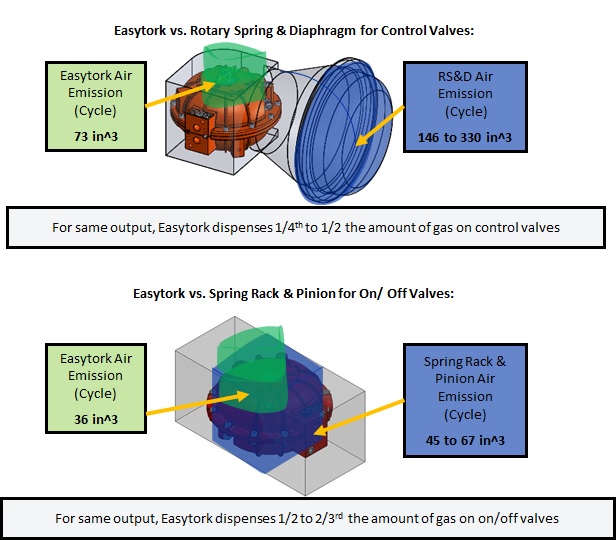
No Springs = Static Fugitive Emissions Eliminated
For actators that utilize springs, there is continuous/constant emissions even when actuators are not moving
- Compromised soft seals in actuators will constantly bleed air / natural gas
- O-rings are prevalently used in rack & pinions as seal design. O-rings are not heavy duty and are designed for static sealing, not the dynamic sealing that actuators require. They typically start wearing out at 200,000 cycles
- Springs in actuator weaken the seal by vacuuming in environmental debris that attack the soft seals
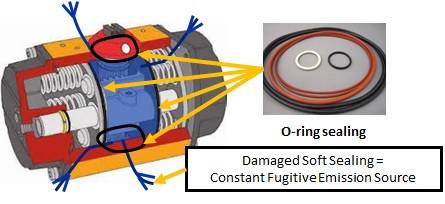
Easytork Does Not Utilize Springs - Zero Bleed Even After 4,500,000 cycles at Static State
- Easytork uses a heavy duty vane lip seal to prevent any bleed-by
- With no springs to vacuum in environmental debris, Easytork’s soft seals are never exposed to the environmental debris
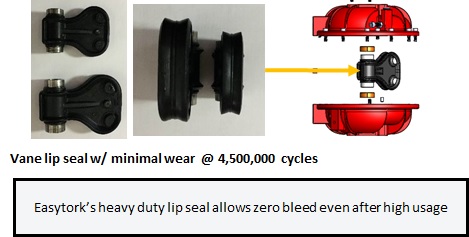
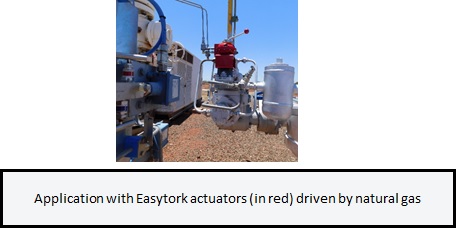
Control Valve Fugitive Emissions Reduction
Actuator Stiffness Results in Better Control Valve
- High air pressure, on both sides of the actuator vane provides exceptional stiffness. High stiffness helps withstand change in process or air supply
Actuator Stiffness Results in Reduced Air Consumption and Fugitive Emission
- The less the actuator has to move, the less gas is emitted into environment
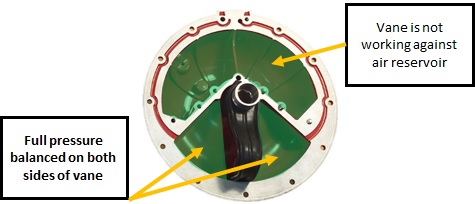
Springs Worsen Fugitive Emission When Control Valve is Powered By Natural Gas
- Spring based actuators have to constantly move to compensate for air supply or process pressure fluctuation. If the control valve package is powered by natural gas, this results in constant fugitive emission. Air reservoir designs mitigate this problem

Need More Information? Let Us Help You.
314-266-6880, info@easytork.com, or Live Chat with Customer ServiceSend Us a Message (Same Business Day Response):
